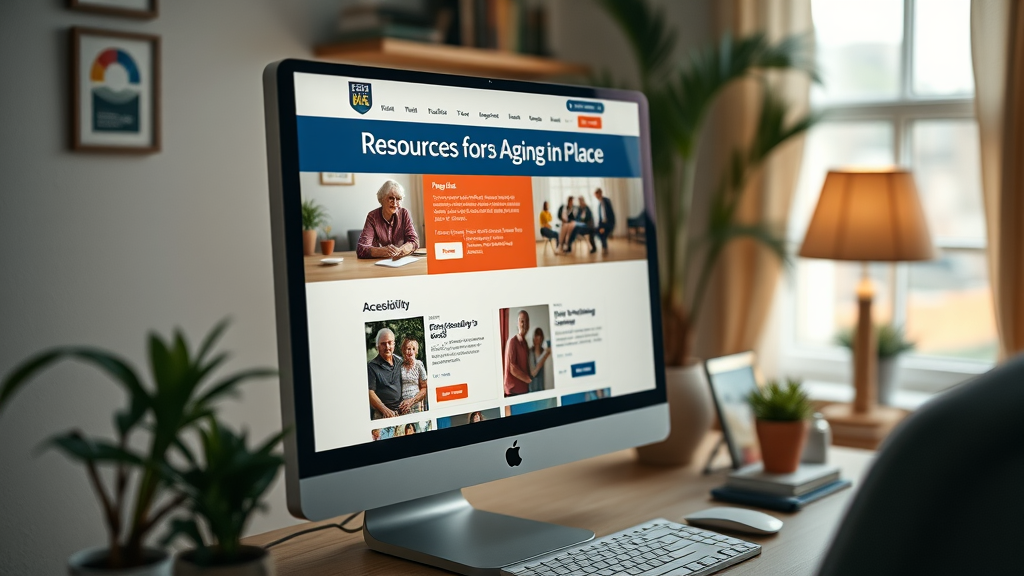As we navigate life’s journeys, the prospect of aging gracefully in familiar surroundings often sparks both excitement and uncertainty. The concept of “Aging in Place” offers a solution, enabling individuals to maintain independence while enjoying the comfort of home. But what hidden benefits does this lifestyle choice hold? In our article, we will explore how embracing this approach not only enhances quality of life but also empowers you to make informed decisions for your future. Let’s dive in!
Understanding Aging in Place
Aging in Place refers to the ability of individuals, particularly older adults, to live in their own homes and communities independently as they age, rather than relocating to assisted living facilities or nursing homes. This concept promotes the idea that seniors can maintain their dignity and autonomy while receiving the necessary support to lead fulfilling lives.
Key Benefits of Aging in Place:
- Familiarity: Staying in a familiar environment can reduce stress and anxiety associated with moving.
- Independence: Older adults can retain their independence and control over their daily lives.
- Cost-Effective: Aging in place can be more affordable compared to assisted living or nursing homes.
- Community Integration: Seniors can remain connected to their community and social networks.
| Benefit | Description |
|---|---|
| Familiarity | Reduces anxiety and stress associated with relocation |
| Independence | Maintains control over daily activities |
| Cost-Effectiveness | More affordable than institutional care |
| Community Integration | Keeps seniors connected with friends and family |

“The ability to age in place can significantly enhance the quality of life for older adults.”
Key Components of Aging in Place
To successfully age in place, certain key components must be in place to ensure safety and accessibility. These components include home modifications, healthcare services, and community support systems.
Essential Components for Aging in Place:
- Home Modifications: Adjustments such as installing grab bars, ramps, and wider doorways to enhance safety and access.
- Healthcare Services: Access to healthcare providers who can assist with medical needs at home.
- Community Resources: Local agencies that offer support programs tailored for seniors.
| Component | Examples |
|---|---|
| Home Modifications | Grab bars, stair lifts, wider doorways |
| Healthcare Services | Home health aides, telehealth services |
| Community Resources | Area Agencies on Aging, support groups |

“Integrating home modifications is essential for creating a safe living environment for older adults.”
Health Care and Support Services for Aging in Place
Access to healthcare services is crucial for individuals wishing to age in place successfully. A comprehensive care plan that includes regular health check-ups, medication management, and emergency assistance can significantly impact the quality of life for seniors.
Types of Healthcare Services:
- Home Health Care: Services provided by healthcare professionals in the home.
- Telehealth: Remote consultations with healthcare providers via video calls or phone.
- Support Groups: Community gatherings focused on sharing experiences and providing emotional support.
| Service Type | Description |
|---|---|
| Home Health Care | In-home medical assistance |
| Telehealth | Remote consultations |
| Support Groups | Community-based emotional support |

“Healthcare services play a vital role in ensuring that older adults can age in place safely and effectively.”
Home Safety Tips for Older Adults
Maintaining a safe home environment is essential for older adults. Implementing safety measures can prevent accidents and promote a secure living space.
Recommended Home Safety Tips:
- Install Grab Bars: In bathrooms and stairways to prevent falls.
- Improve Lighting: Ensure adequate lighting throughout the house, especially in hallways and entryways.
- Remove Clutter: Keep walkways clear to avoid tripping hazards.
- Emergency Plan: Establish a plan for emergencies, including contact information for family and healthcare providers.
| Tip | Description |
|---|---|
| Install Grab Bars | Prevents falls in critical areas |
| Improve Lighting | Reduces the risk of accidents |
| Remove Clutter | Creates a safer walking environment |
| Emergency Plan | Ensures preparedness for emergencies |

“Simple modifications can make a significant impact on the home safety of older adults.”
Planning Ahead for Aging in Place
Planning is vital for successful aging in place. Identifying needs and resources early on can lead to more effective solutions.
Steps for Effective Planning:
- Assess Needs: Evaluate current health and mobility needs.
- Explore Resources: Research available community services and support.
- Consult Professionals: Work with care managers and geriatric specialists to create a care plan.
Utilizing Area Agencies on Aging
Area Agencies on Aging (AAAs) provide resources and support for older adults. These agencies can help navigate available services to ensure that seniors can live independently.
| Step | Description |
|---|---|
| Assess Needs | Identify health and mobility requirements |
| Explore Resources | Research local services for older adults |
| Consult Professionals | Work with care managers for personalized plans |

“Engaging with Area Agencies on Aging can provide essential support for those looking to age in place.”
Community and Social Connections
Maintaining social connections is crucial for emotional well-being. Engaging in community activities can prevent feelings of isolation and loneliness.
Benefits of Social Connections:
- Emotional Support: Provides companionship and reduces feelings of loneliness.
- Engagement: Participating in community activities can boost mental health.
- Shared Experiences: Connecting with peers allows for sharing challenges and solutions.
| Connection Type | Benefits |
|---|---|
| Emotional Support | Reduces loneliness |
| Engagement | Boosts mental health |
| Shared Experiences | Provides a platform for support |

Government Resources and Support
Understanding government resources available for older adults is essential for effective aging in place. Various programs can assist seniors in maintaining their independence.
Understanding the Role of the Federal Government
The federal government provides numerous resources aimed at supporting older adults, including healthcare services, financial assistance, and community programs.
| Resource Type | Examples |
|---|---|
| Healthcare Services | Medicare, Medicaid |
| Financial Assistance | Social Security, Supplemental Security Income |
| Community Programs | Meals on Wheels, Senior Centers |

Conclusion: Key Takeaways for Aging in Place
Aging in place is a viable option for many older adults, allowing them to retain their independence while enjoying the comforts of home. By understanding the key components, planning ahead, and utilizing available resources, seniors can successfully navigate the challenges of aging.
Key Takeaways:
- Aging in Place promotes independence and familiarity.
- Essential components include home modifications, healthcare services, and community support.
- Safety precautions are vital to prevent accidents at home.
- Planning and utilizing resources can significantly enhance the aging experience.

“The journey of aging in place can lead to a fulfilling and empowered life at home.”
Frequently Asked Questions (FAQs)
-
What is the primary benefit of aging in place?
- The primary benefit is maintaining independence and familiarity in a comfortable environment. -
How can I ensure my home is safe for aging in place?
- Implement safety modifications such as grab bars, improved lighting, and a clutter-free environment. -
What resources are available for older adults?
- Area Agencies on Aging, healthcare services, and community support programs can provide assistance. -
Why is planning important for aging in place?
- Planning helps identify needs and available resources, ensuring a smoother aging process.
Bullet-Point Summary of Key Takeaways
- Aging in place enhances quality of life.
- Key components include home modifications and healthcare access.
- Home safety tips are essential for preventing accidents.
- Planning ahead leads to better resources and support.
For further resources on Aging in Place, consider consulting the National Institute on Aging or exploring options through the Area Agency on Aging.
 Add Row
Add Row  Add
Add 





Write A Comment